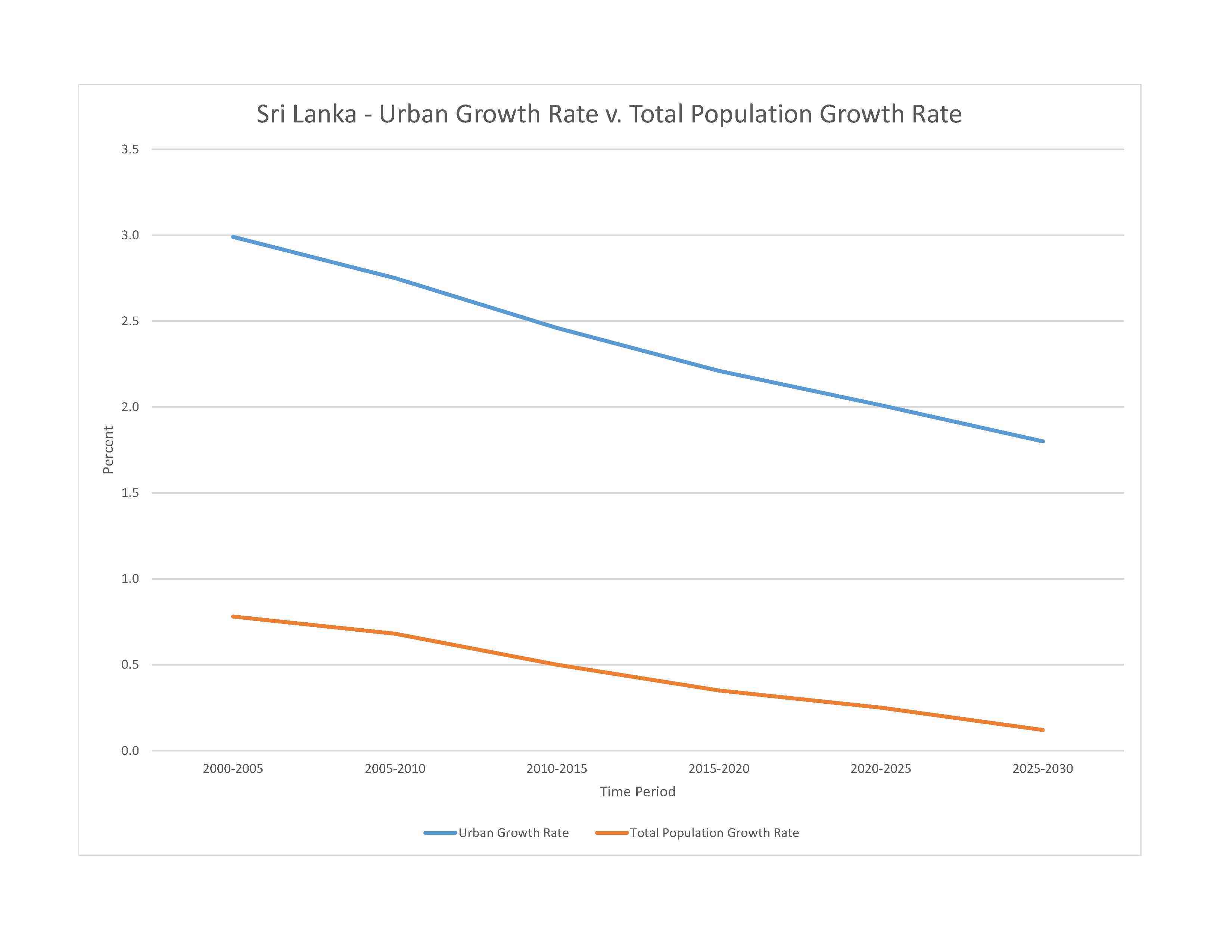
23,326,272 (2023 est.)
noun: Sri Lankan(s)
adjective: Sri Lankan
Sinhalese 74.9%, Sri Lankan Tamil 11.2%, Sri Lankan Moors 9.2%, Indian Tamil 4.2%, other 0.5% (2012 est.)
Sinhala (official and national language) 87%, Tamil (official and national language) 28.5%, English 23.8% (2012 est.)
note: data represent main languages spoken by the population aged 10 years and older; shares sum to more than 100% because some respondents gave more than one answer on the census; English is commonly used in government and is referred to as the "link language" in the constitution
Buddhist (official) 70.2%, Hindu 12.6%, Muslim 9.7%, Roman Catholic 6.1%, other Christian 1.3%, other 0.05% (2012 est.)
0-14 years: 21.95% (male 2,609,642/female 2,511,570)
15-64 years: 66.22% (male 7,609,573/female 7,836,480)
65 years and over: 11.83% (2023 est.) (male 1,156,637/female 1,602,370)
total dependency ratio: 53.7
youth dependency ratio: 35.4
elderly dependency ratio: 17
potential support ratio: 5.9 (2021 est.)
total: 33.9 years (2023 est.)
male: 32.1 years
female: 35.6 years
0.56% (2023 est.)
14.6 births/1,000 population (2023 est.)
7.4 deaths/1,000 population (2023 est.)
-1.5 migrant(s)/1,000 population (2023 est.)
the population is primarily concentrated within a broad wet zone in the southwest, urban centers along the eastern coast, and on the Jaffna Peninsula in the north
urban population: 19.2% of total population (2023)
rate of urbanization: 1.22% annual rate of change (2020-25 est.)

103,000 Sri Jayewardenepura Kotte (legislative capital) (2018), 633,000 COLOMBO (capital) (2023)
at birth: 1.05 male(s)/female
0-14 years: 1.04 male(s)/female
15-64 years: 0.97 male(s)/female
65 years and over: 0.72 male(s)/female
total population: 0.94 male(s)/female (2023 est.)
25.6 years (2016 est.)
note: data represents median age at first birth among women 30-34
29 deaths/100,000 live births (2020 est.)
total: 6.8 deaths/1,000 live births (2023 est.)
male: 7.5 deaths/1,000 live births
female: 6.1 deaths/1,000 live births
total population: 76.6 years (2023 est.)
male: 73.6 years
female: 79.8 years
2.14 children born/woman (2023 est.)
1.05 (2023 est.)
64.6% (2016)
improved: urban: 99.7% of population
rural: 91.2% of population
total: 92.8% of population
unimproved: urban: 0.3% of population
rural: 8.8% of population
total: 7.2% of population (2020 est.)
4.1% of GDP (2020)
1.23 physicians/1,000 population (2020)
4.2 beds/1,000 population (2017)
improved: urban: 96.6% of population
rural: 97.9% of population
total: 97.6% of population
unimproved: urban: 3.4% of population
rural: 2.1% of population
total: 2.4% of population (2020 est.)
degree of risk: intermediate (2023)
vectorborne diseases: dengue fever
water contact diseases: leptospirosis
animal contact diseases: rabies
5.2% (2016)
total: 2.58 liters of pure alcohol (2019 est.)
beer: 0.22 liters of pure alcohol (2019 est.)
wine: 0.01 liters of pure alcohol (2019 est.)
spirits: 2.32 liters of pure alcohol (2019 est.)
other alcohols: 0.03 liters of pure alcohol (2019 est.)
total: 22% (2020 est.)
male: 41.4% (2020 est.)
female: 2.6% (2020 est.)
20.5% (2016)
65.1% (2023 est.)
women married by age 15: 0.9%
women married by age 18: 9.8% (2016 est.)
1.9% of GDP (2019 est.)
definition: age 15 and over can read and write
total population: 92.3%
male: 93%
female: 91.6% (2019)
total: 14 years
male: 14 years
female: 14 years (2018)
NOTE: The information regarding Sri Lanka on this page is re-published from the 2024 World Fact Book of the United States Central Intelligence Agency and other sources. No claims are made regarding the accuracy of Sri Lanka 2024 information contained here. All suggestions for corrections of any errors about Sri Lanka 2024 should be addressed to the CIA or the source cited on each page.
This page was last modified 04 May 24, Copyright © 2024 ITA all rights reserved.